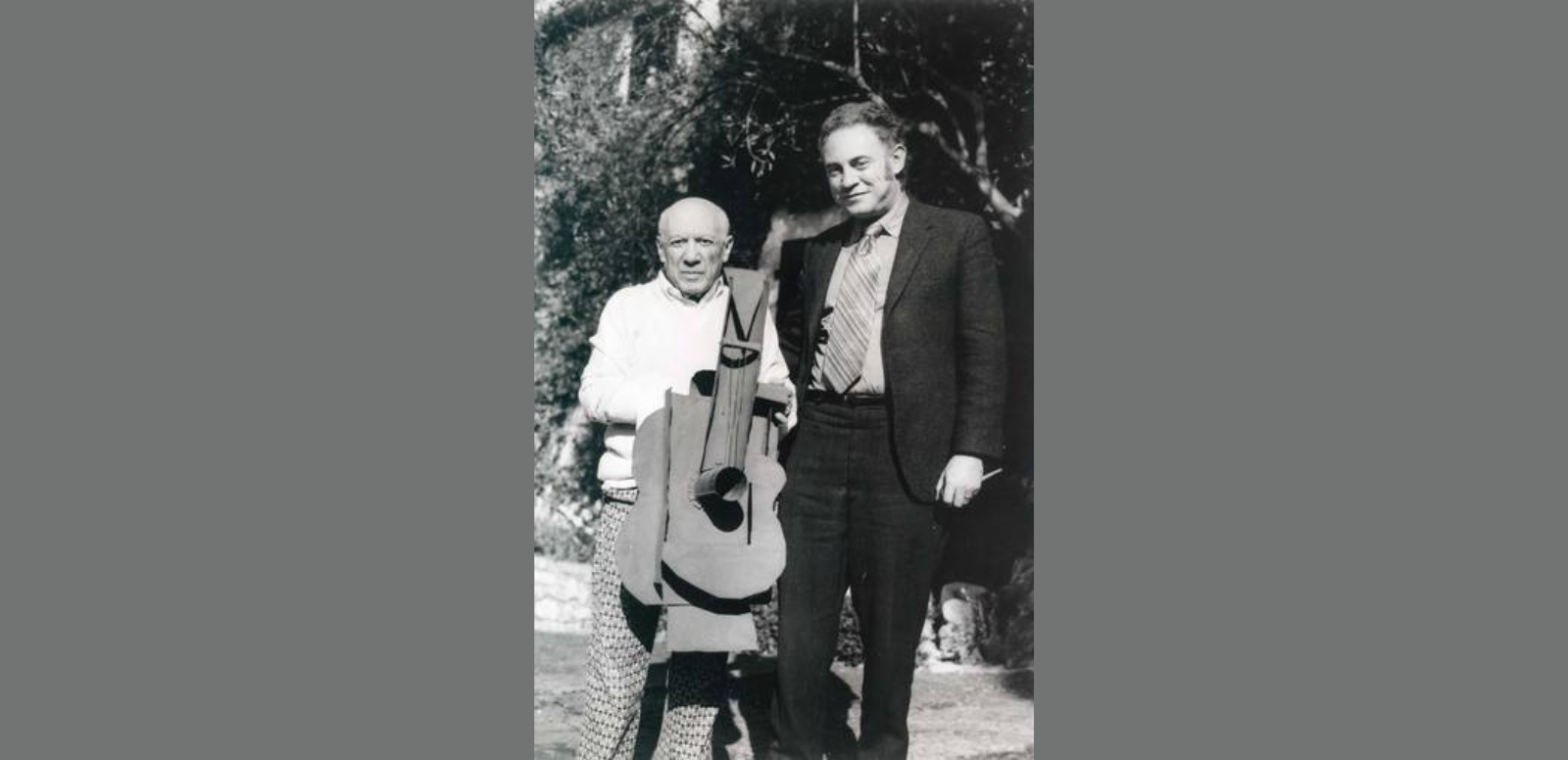
© Sucesión Picasso, VEGAP, Madrid, 2023
The first half of the twentieth century was a time when different artistic disciplines intermingled and artists' creativity was the result of the synergy between disciplines, in addition to a break with the established. In this way, the artists of the time used to combine different disciplines in their works, as Alejandra Fernández Sanz points out in her article "Pablo Picasso: Evidencias musicales en su vida y obra", published in the magazine El pájaro de Benín (2020). The article studies the influence of music in Pablo Picasso's work and his vital relationship with music.
Fernández Sanz situates the beginning of this journey and Picasso's first approach to this art with his paternal grandfather Diego Ruiz de Almoguera, who had the soul of a musician. This relationship introduced the painter to a musical environment from an early age, as Cecilia García Marco (2011) notes in her work Analysis of the Musical Presence in the Painting of Georges Braque and Pablo Picasso up to 1914.
It can be seen that Picasso's work is strongly influenced by music throughout his life. In several of his creations, instruments and other musical elements play a fundamental role, such as Woman with a Mandolin (1913), Three Musicians (1921), Instruments de musique sur une table (1924) and The Old Blind Guitarist (1903). These are just a few examples of paintings with music as a central element.
Picasso had a strong connection with music and used it as a tool of communication, which he captured in his paintings. An example of this, as Cecilia García Marco reports in the magazine Música Coral del Sur (2013), is the incorporation of parts of the lyrics of the song "Ma Jolie" ("Oh, Manon, ma jolie...my heart says good morning to you") in some of his works as a token of love, as can be seen in the work Bottle of Bass (1914).
Finally, influenced by music, he also produced sculptures. As detailed in the exhibition Picasso: Guitars 1912-1914 held in 2011 at the Museum of Modern Art in New York - MoMA, where the sculpture of the guitar is exhibited, which is made of cardboard, paper, string and wire, materials that he deformed and glued to create the shape of the instrument. This exhibition brought together 70 collages, drawings, paintings and photographs under the common theme of the guitar.
Referencias:
- Fernández Sanz, A. (2020). Pablo Picasso: Musical evidence in his life and work. EL PÁJARO DE BENÍN, 6. Available at: https://institucional.us.es/revistas/benin/6/Art_7.pdf
- García Marco, C. (2011). THE CREATIVE IMPULSE OF MUSIC. Analysis of the musical presence in the painting of Georges Braque and Pablo Picasso until 1914. [Doctoral thesis]. University of Valencia.
- García Marco, C. (2013). La presencia de la música en la pintura del cubismo sintético de Pablo Picasso hasta 1914 [The presence of music in Pablo Picasso's synthetic cubism painting until 1914]. Música Oral Del Sur, 10, p.168. Available at: http://www.centrodedocumentacionmusicaldeandalucia.es/ojs/index.php/mos/article/view/163/musica-en-la-pintura-del-cubismo-de-pablo-picasso
- Museum of Modern Arts, MoMA (2011). Picasso: Guitars 1912-1914. Available at: https://www.moma.org/calendar/exhibitions/1088
- Pablo Picasso, Woman with Mandolin, 1913. Halftone reproduction on paper, 20.6 x 15 cm. Museo Nacional Centro de Arte Reina Sofía.
- Pablo Picasso, The Three Musicians, 1921. Oil on canvas, 200.7 x 222.9 cm. The Museum of Modern Arts.
- Pablo Picasso, Bottle of Bass, 1914. Gouache, watercolour, charcoal, graphite and pastel on paper, 61 x 48 cm. Centre Pompidou.
- Pablo Picasso, Instruments de musique sur une table, 1924. Oil on canvas, 162 x 204,5 cm. Museo Nacional Centro de Arte Reina Sofía.

